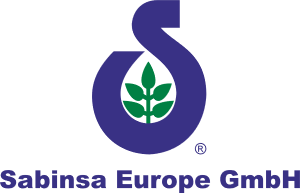Tetrahydrocurcuminoids (THC)*, the patent pending nutrient for topical and oral applications are color-free compounds derived from the yellow curcuminoids** (the biologically active principles extracted from the rhizomes of (Curcuma longa) (Figure 2).
The properties of THC, particularly its superior antioxidant property, combined with the lack of yellow color, render this product useful for oral (e.g. achromatic foods) and cosmetic applications that currently employ conventional synthetic antioxidants.
Oral Use
THC has been reported to be an effective antioxidant and chemopreventive agent.1 The Tetrahydrocurcuminoids’ chemopreventive properties are associated with their antioxidant effects since free radicals have been proven to be causative factors of tumor promotion.

A recent study validated the well-known superior antioxidant properties of THC and explained the mechanism of antioxidant action. In this study, the inhibitory effects of curcumin and THC were studied on the lipid peroxidation of erythrocyte membranes induced by tertbutylhydroperoxide. The results demonstrated that THC showed a greater inhibitory effect than curcumin. The authors concluded that THC must efficiently scavenge free radicals such as the tert-butoxyl radical and peroxyl radical. They also based their explanation of the tetrahydrocurcuminoids’ mechanism of antioxidant action on their molecular structure. The diketo moiety was identified as exhibiting antioxidant activity by cleavage of the C-C bond on the active methylene group (CH2-) carbon located between the carbonyls in the diketo moiety.2
Similar results were reported in another study that evaluated the comparative antioxidant activity of curcuminoids and tetrahydrocurcumin in vitro using linoleic acid as the substrate in an ethanol/water system as well as using rabbit erythrocyte membranes and rat livers. It was found that Tetrahydrocurcumin had the strongest antioxidant activity among all curcuminoids in each assay system. The authors concluded that these results must play an important role in the antioxidant mechanism of curcumin in vivo.3
Cosmetic Use
The tetrahydrocurcuminoids’ antioxidant actions are useful and important in maintaining skin health and integrity. As established, free radicals on the surface of the skin, generated thorough exposure to ultraviolet radiation, chemicals, or other environmental stress factors catalyze aging of the skin. The tetrahydrocurcuminoids’ precursors, the curcuminoids, have been validated as topical antioxidants in laboratory experiments. Curcuminoids are reported to protect normal human keratinocytes from hypoxanthine/xanthine injury in in vitro studies. This study suggests that curcuminoids and therefore THC offer protection to the skin and could be included as functional antioxidants in topical applications.4 Added benefits of THC are its anti-inflammatory5,6 action and ability to improve the shelf-life of fat-based topical formulations by inhibiting the auto-oxidation of fats.
- Kim et al. (1998) Carcinogenesis, 19(1), 81-85
- Sugiyama et al. (1996) Biochem. Pharmacol., 52(4), 519-525
- Huang et al. (1997) J. Cell. Biochem. Suppl., 27, 26-34
- Bonté et al. (1997) Planta Medica, 63(3), 256-266
- Mukhopadhaya et al. (1982) 12, 2287
- Rao et al. (1982) Ind. J. Med. Res., 75, 574-578
** Patent granted for curcuminoids and its derivative, e.g. THC, US Patent #5,861,415 * Patent Pending







